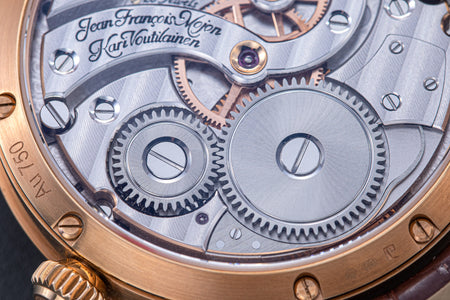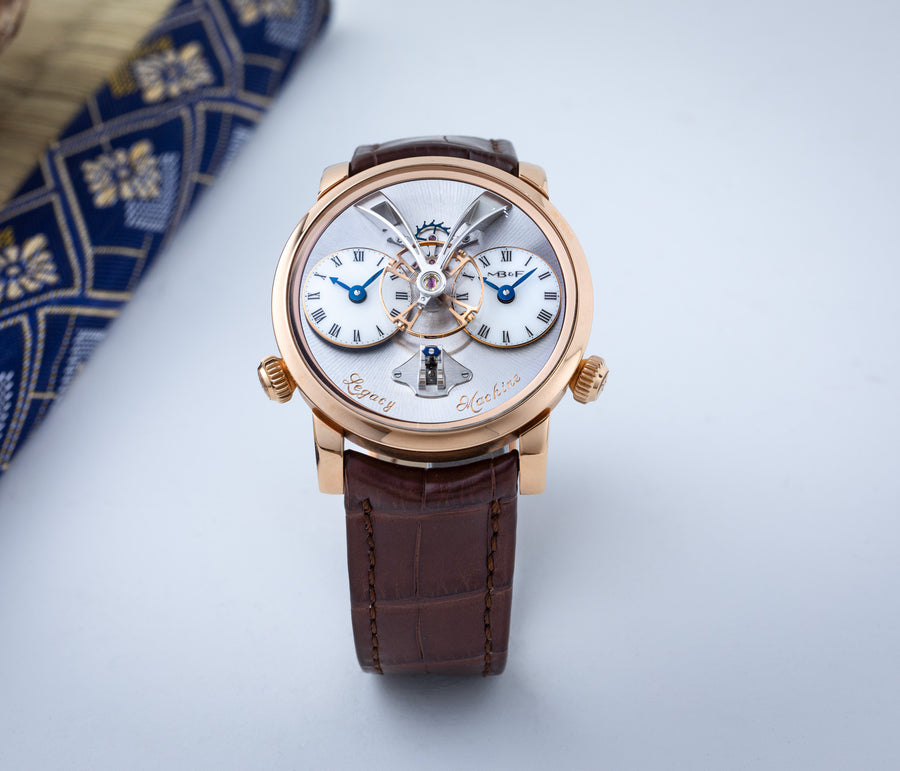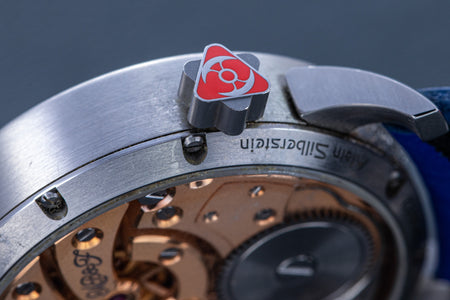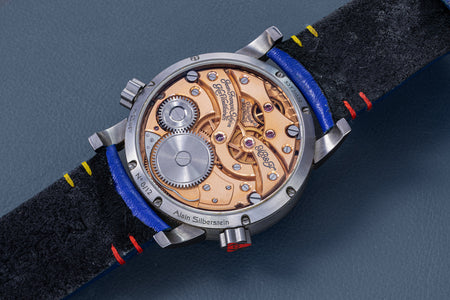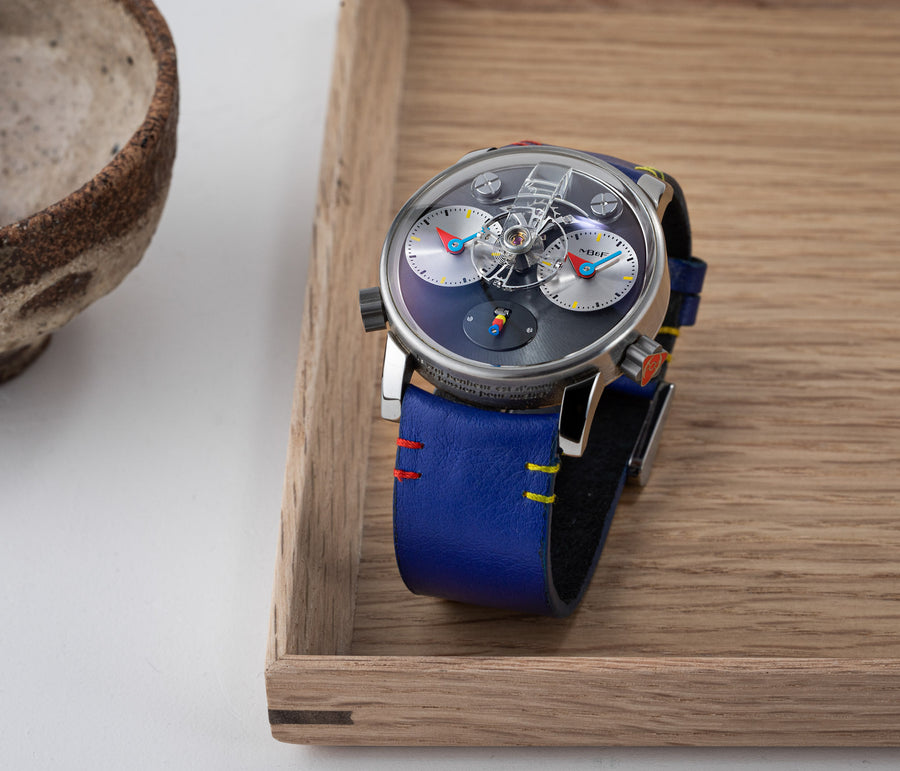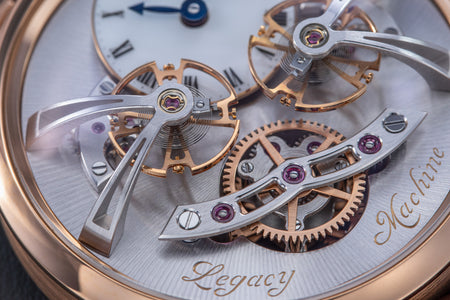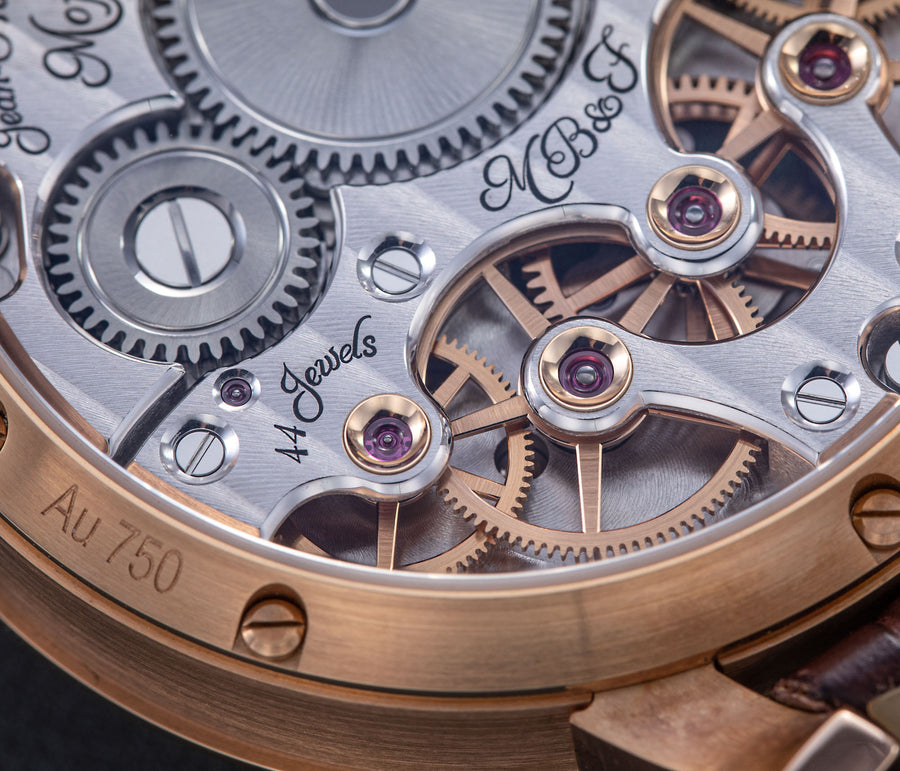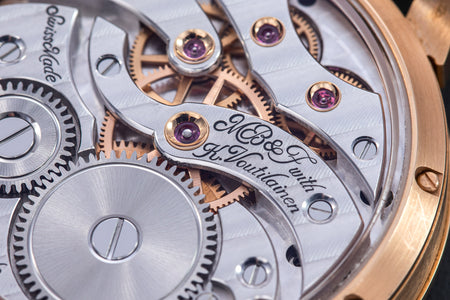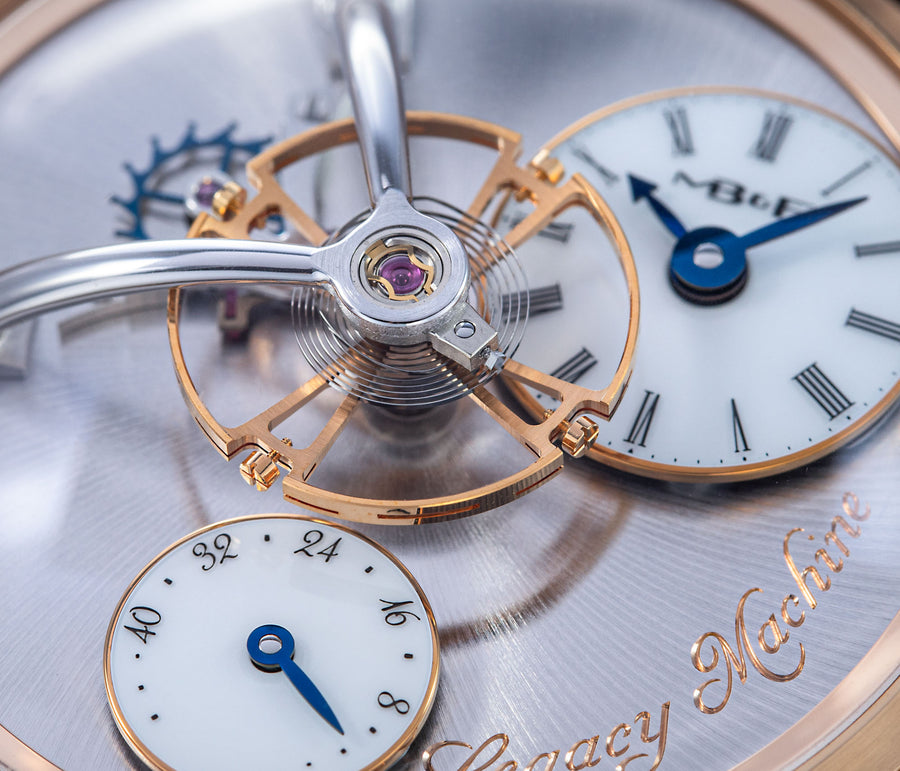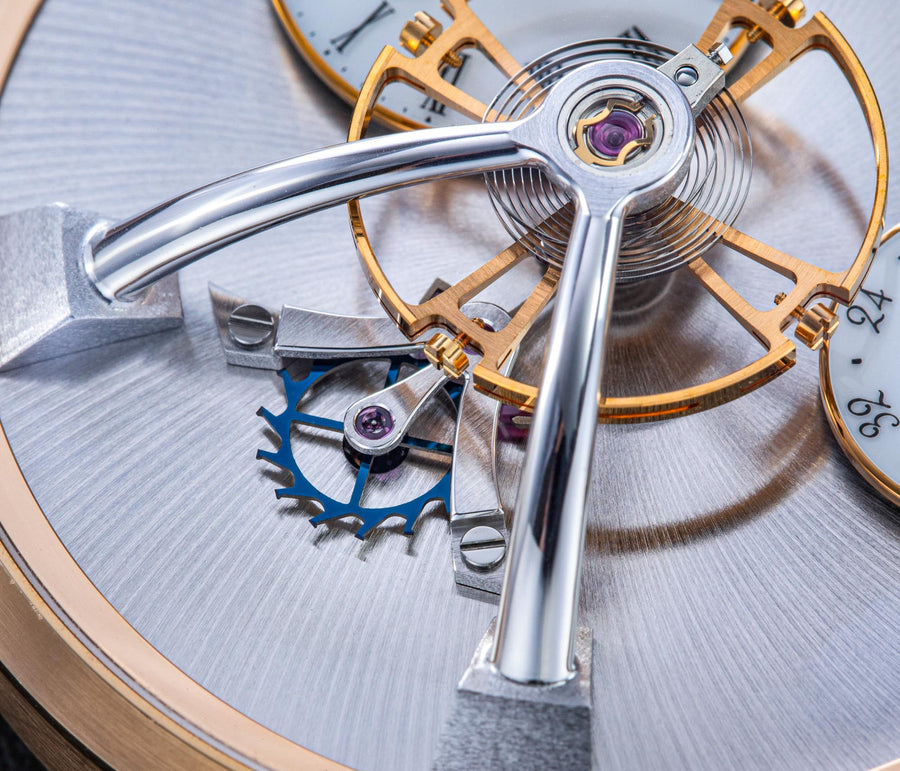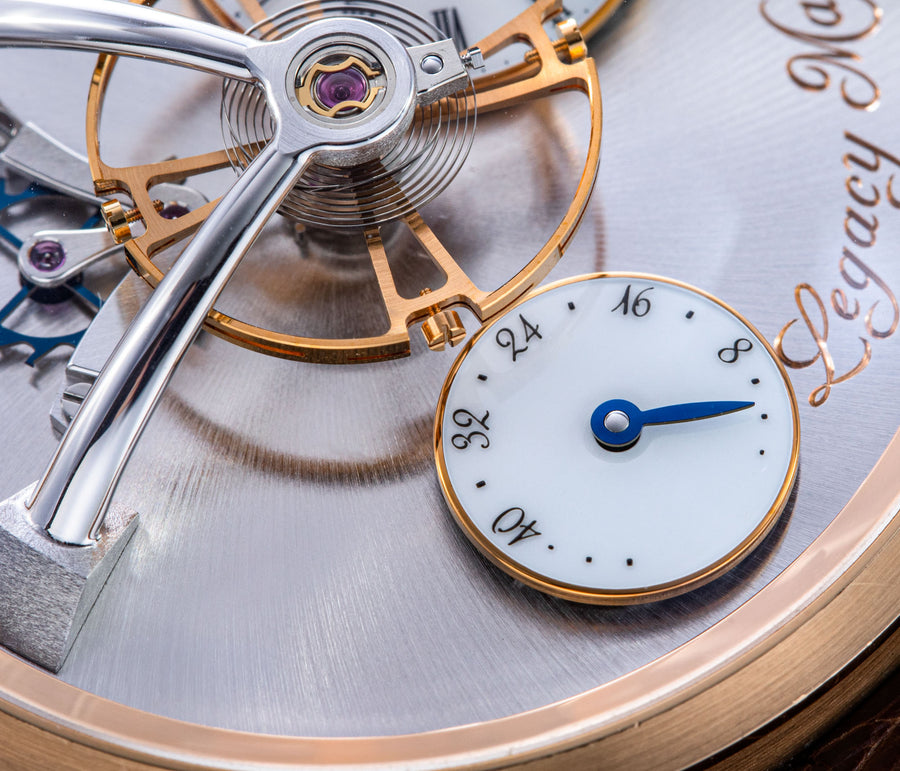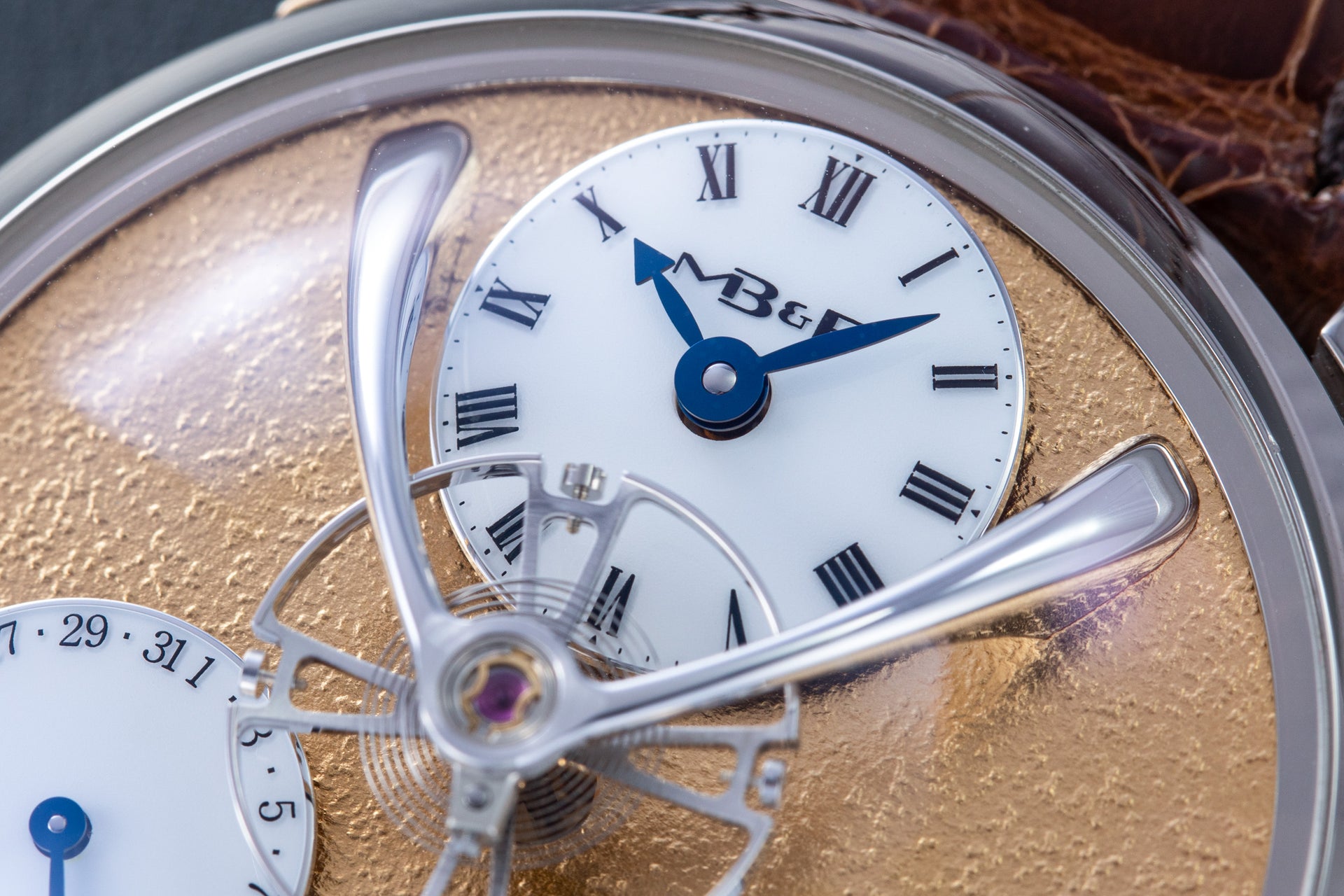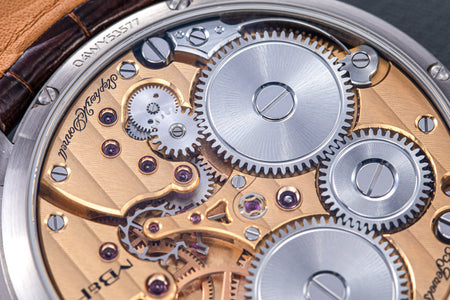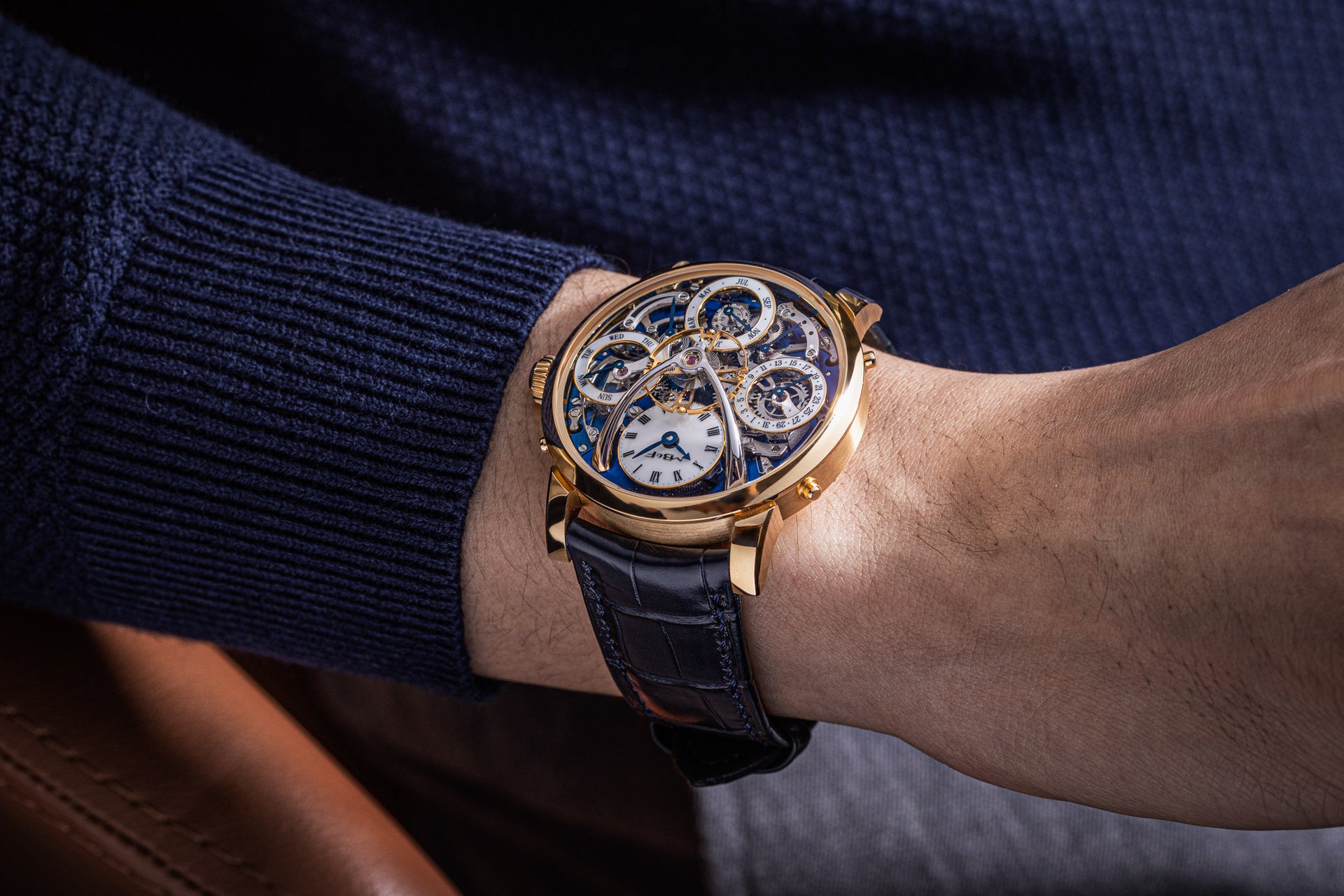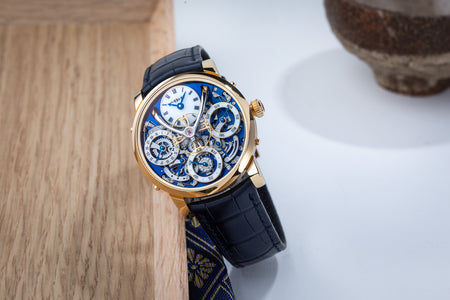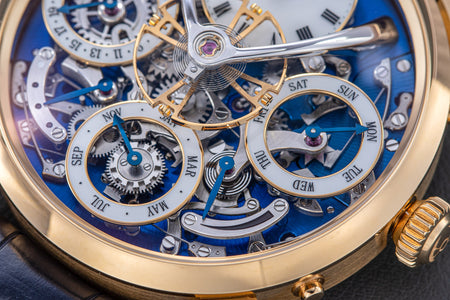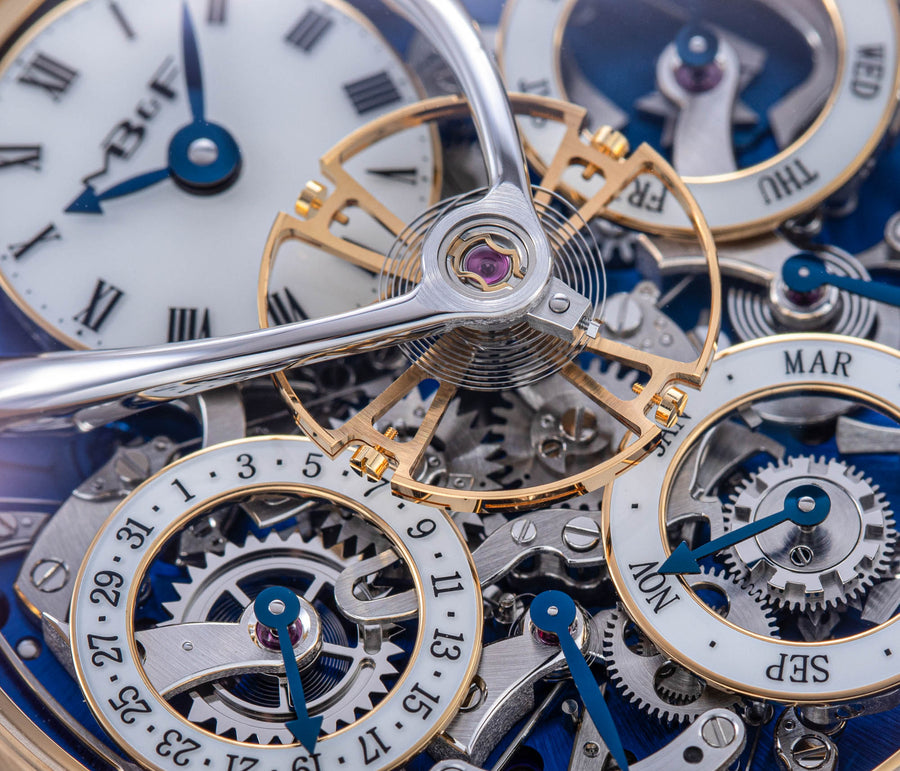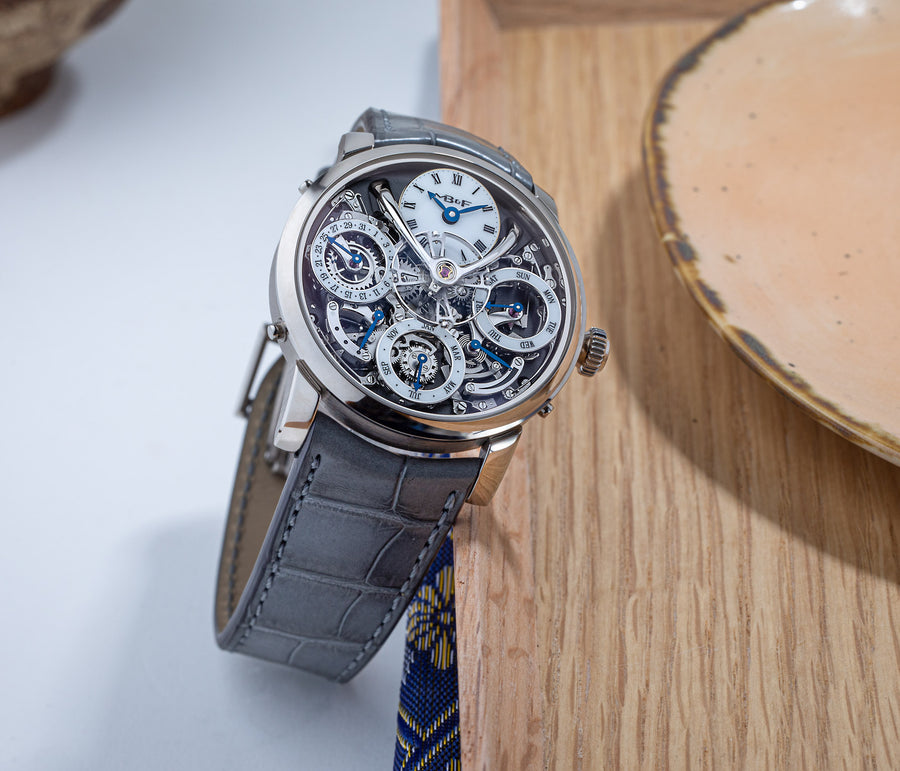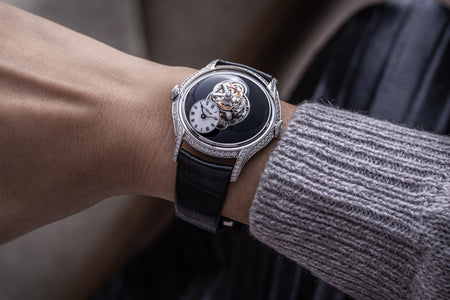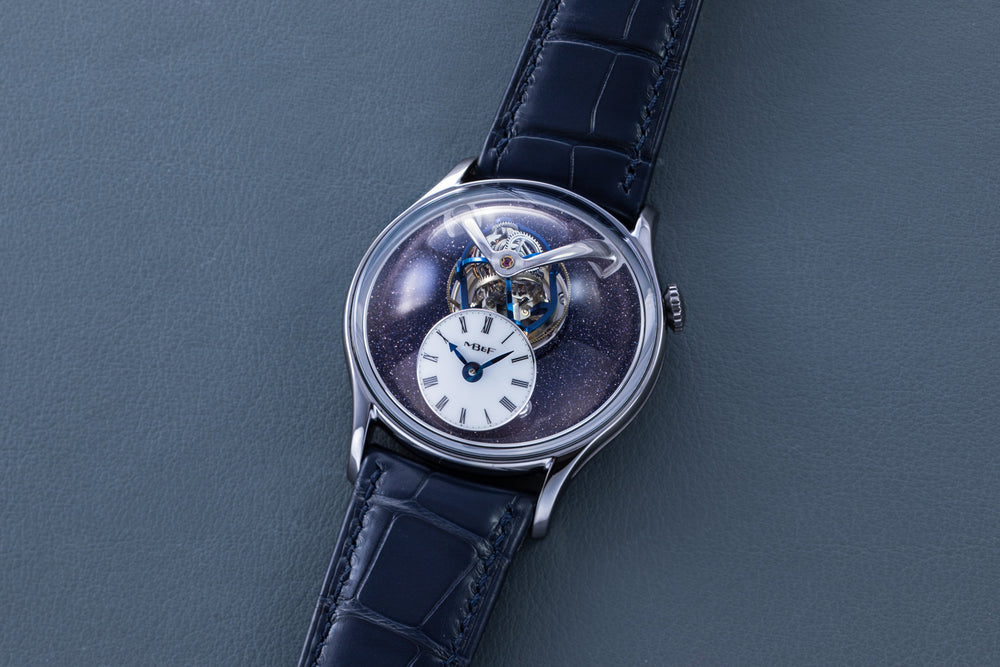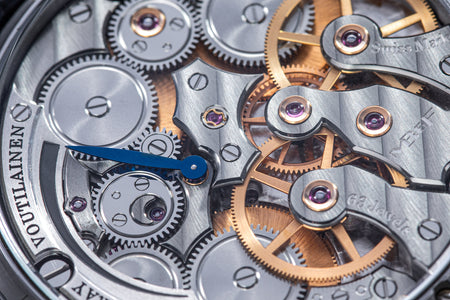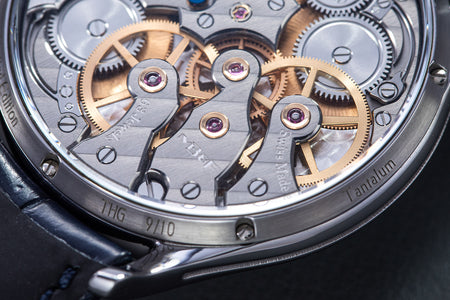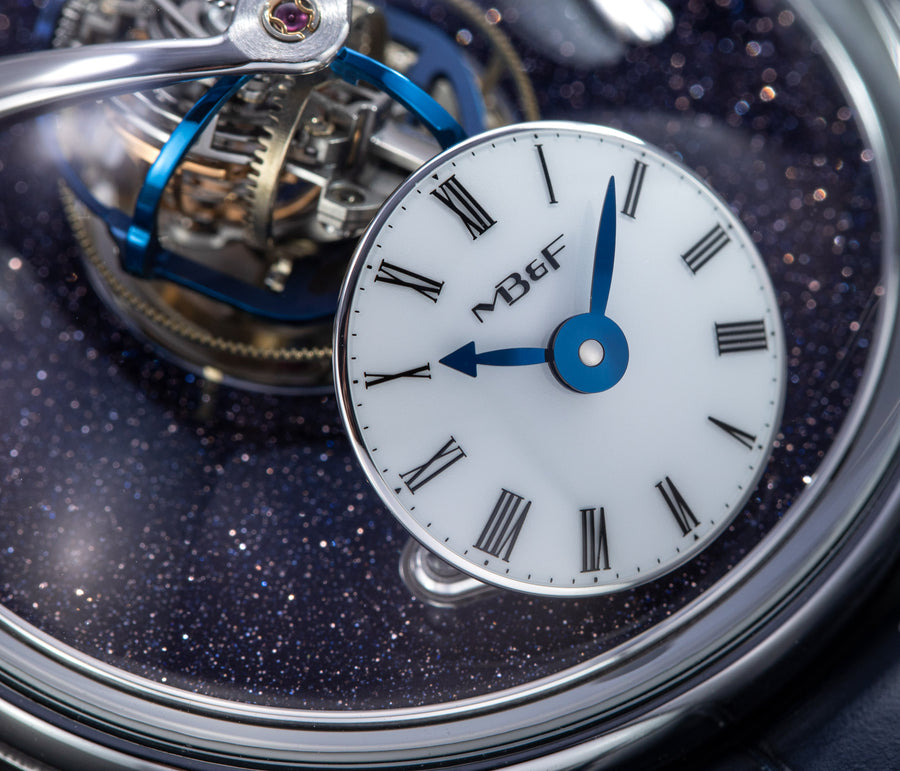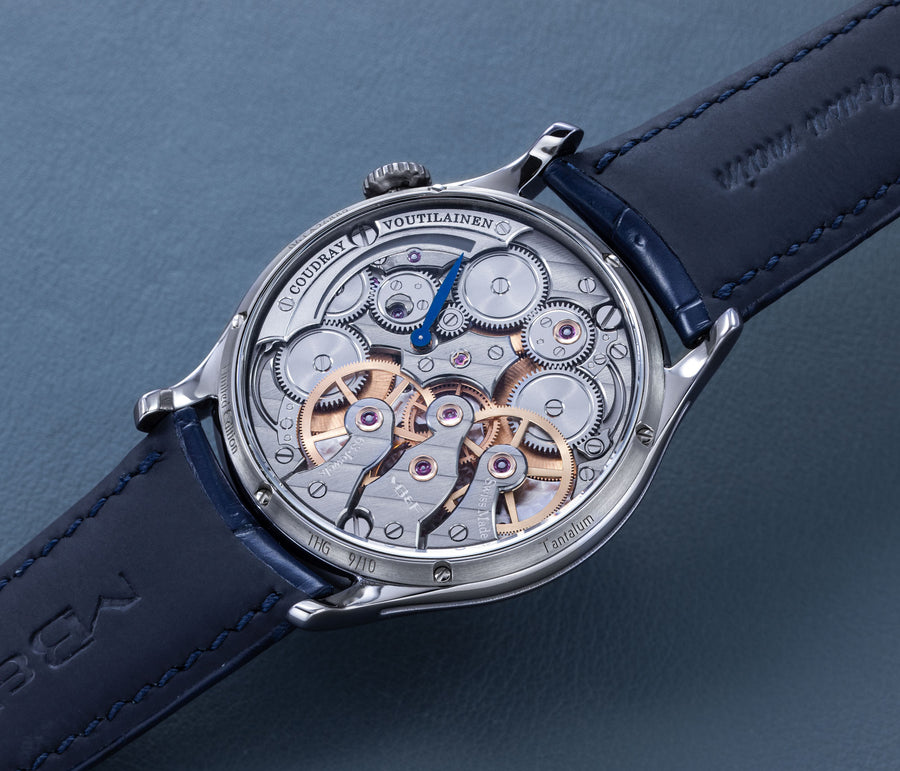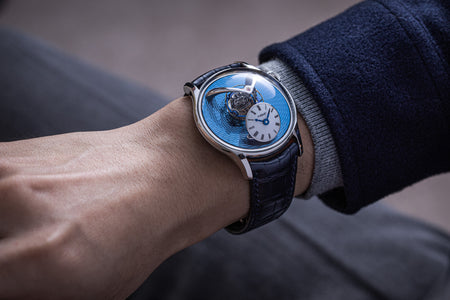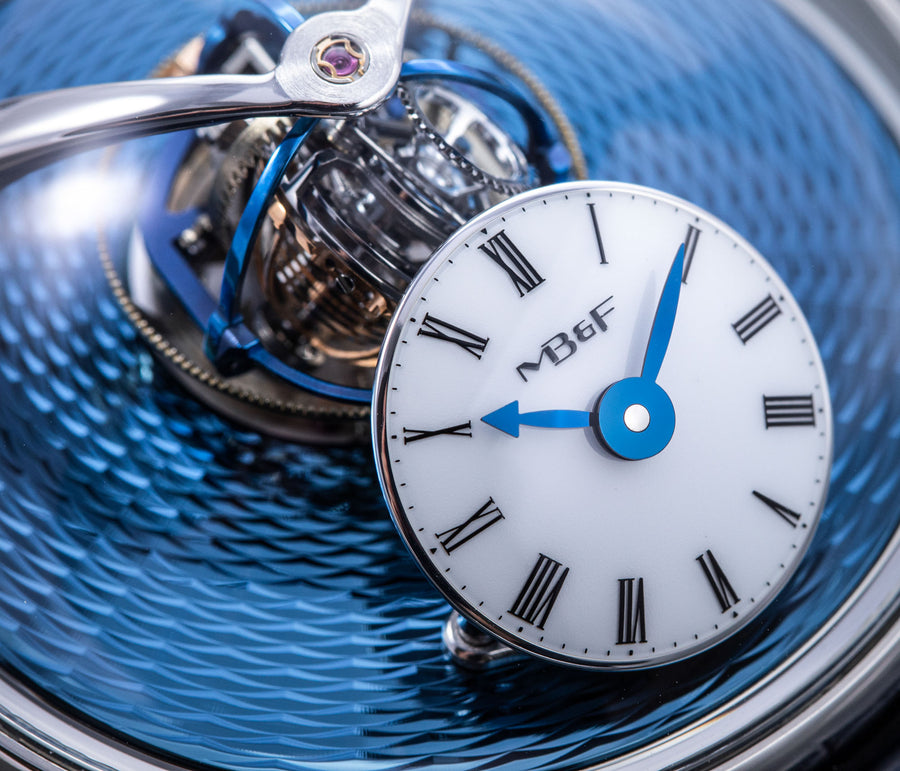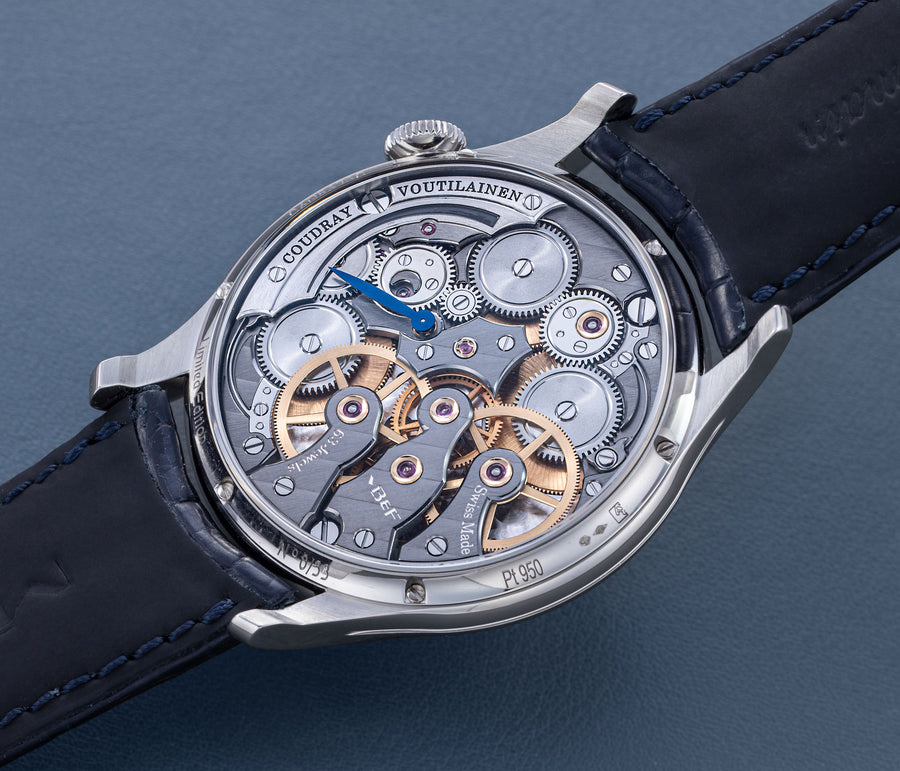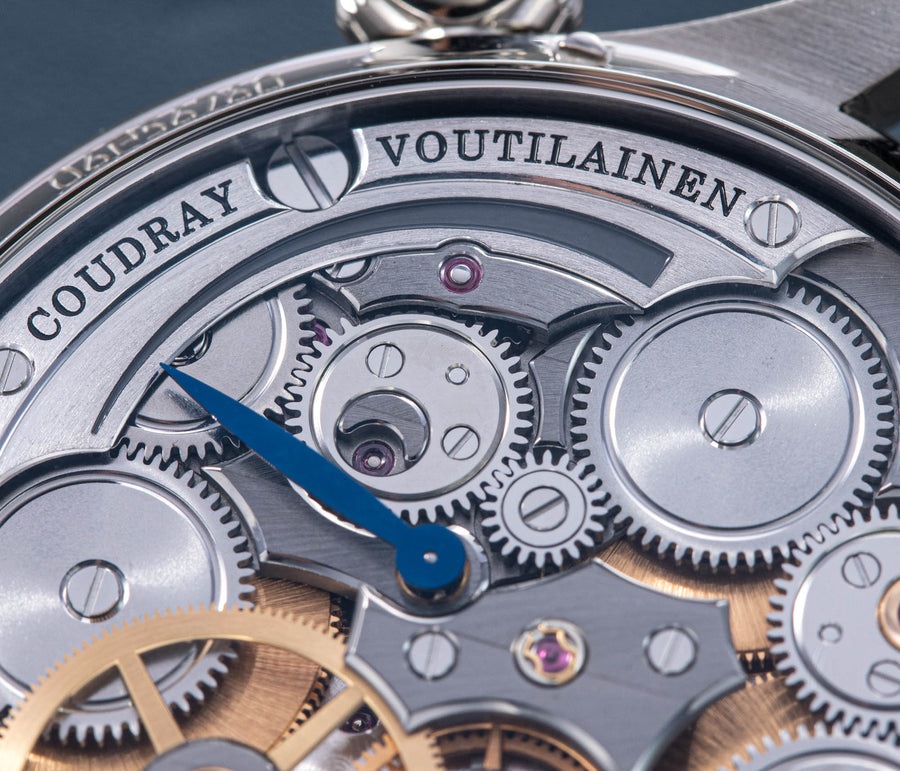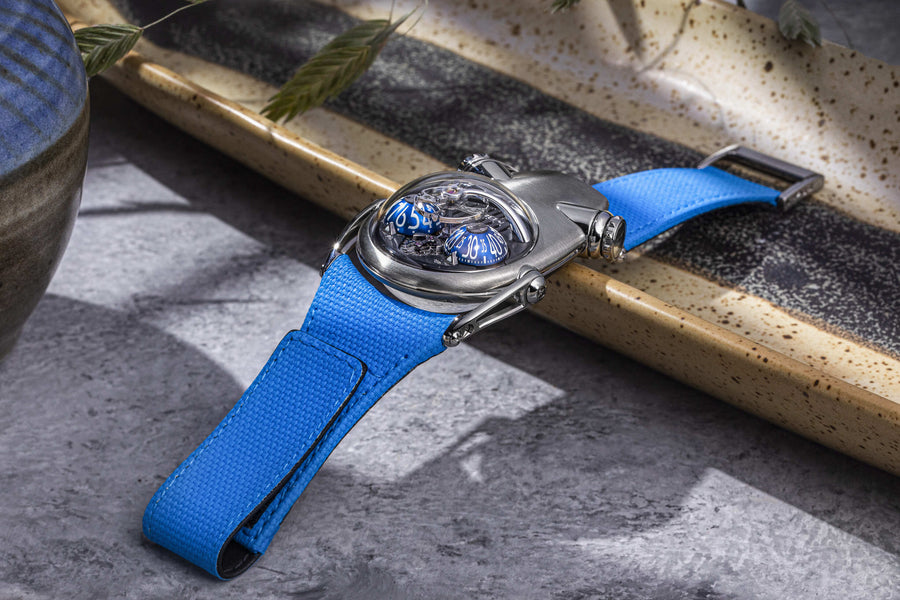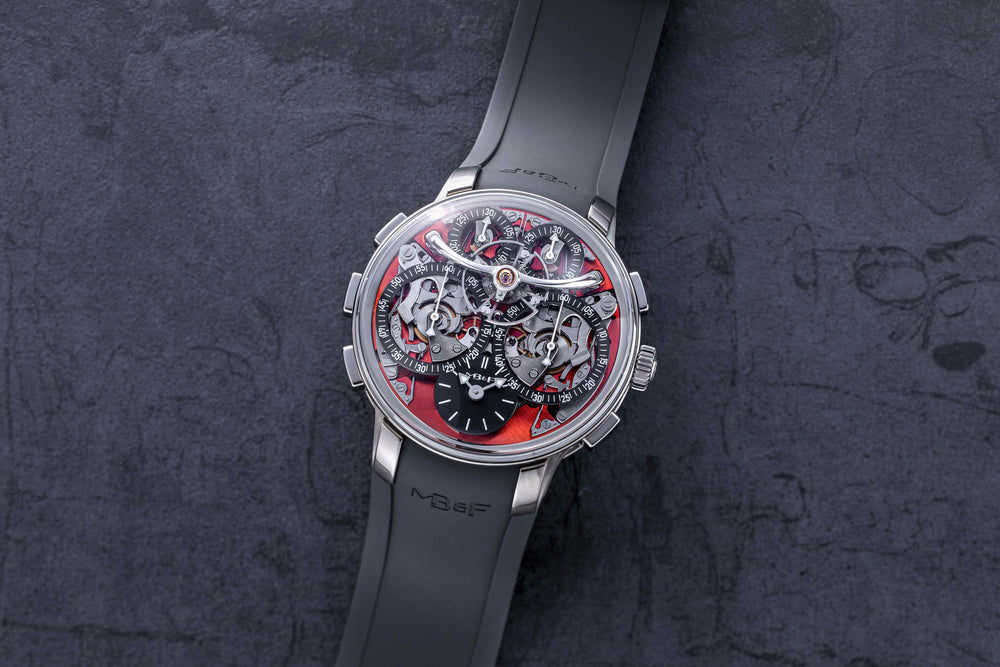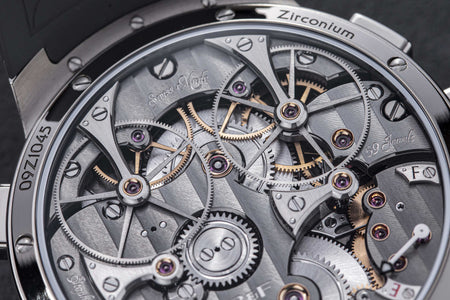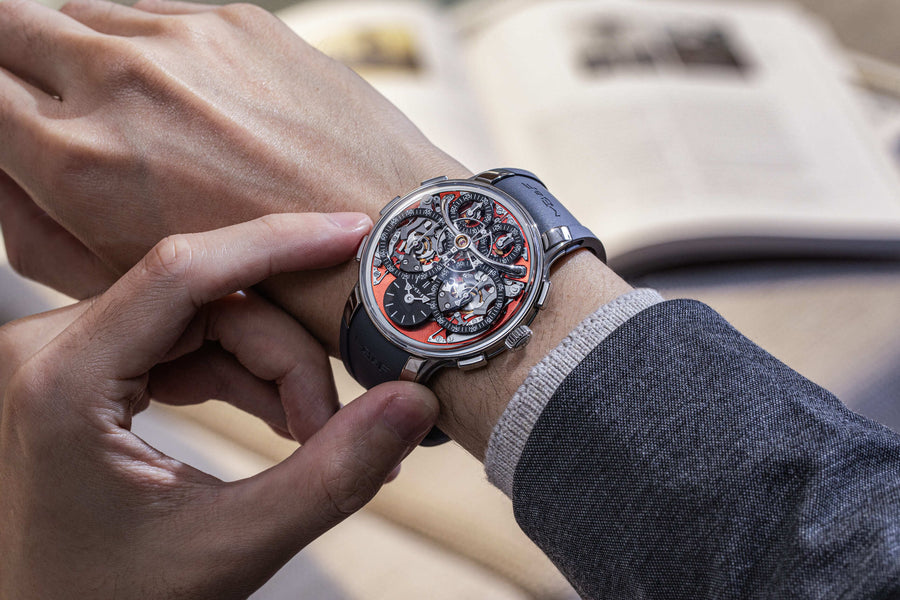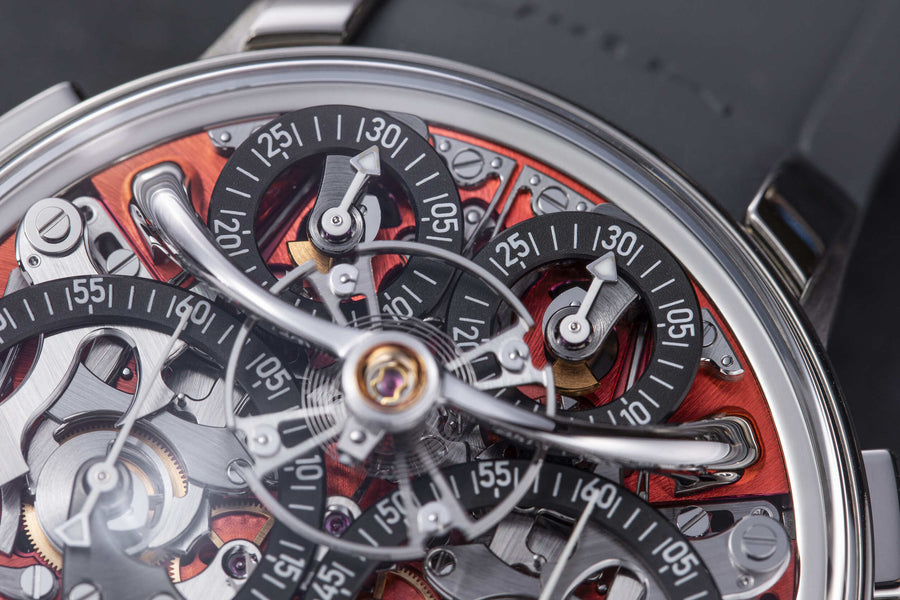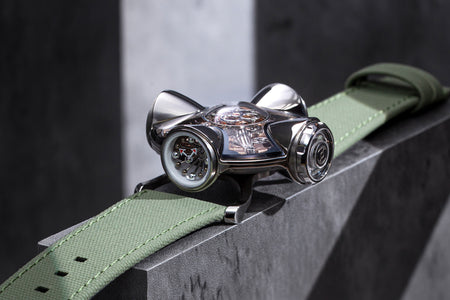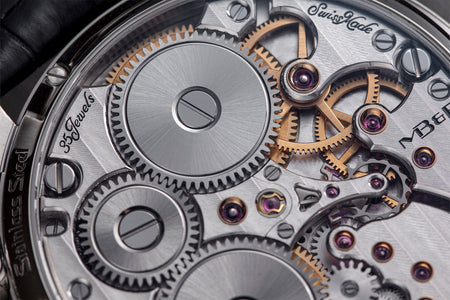"At MB&F we live as artists and an artist doesn’t have plans, trajectories or objectives. I don’t think he should. I think an artist should let himself be free and wake up tomorrow morning and have a different idea. All I know is that, when it feels right, it is right."
While most of the key figures in the early days of independent watchmaking were necessarily watchmakers, Maximilian Büsser stands out for being a consummate creative, a marketer par excellence and an entrepreneur all rolled into one. Tapped to run the watch division of Harry Winston in 1998 – still in his first job at Jaeger-LeCoultre and barely out of his twenties – Büsser’s genius was realising the talent of independent watchmakers required a big-name brand as a catalyst for wider recognition.
That led to the Opus, a series of watches that the New York jeweller created in collaboration with notable independent watchmakers. Announced in 2001, the very first edition was the work of François-Paul Journe, who installed his signature movements – the Tourbillon, the Resonance and the Octa – in the recognisable Harry Winston watch case.
The series would progress with one watch a year – Halter’s turn was in 2003, and then Urwerk in 2005 – but Büsser would depart Harry Winston not long after the Opus V of Urwerk. He set up shop on his own to pursue the very same idea of collaborating with independent watchmakers, naming his company Maximilian Büsser & Friends (MB&F) as a result.
2013
Maximilian Büsser
LM1 Rose Gold
The very first model of the Legacy Machine (LM) collection, the LM1 established the aesthetic that would define the series. Conceived as a horological machine designed in the 19th century, the LM1 incorporates many elements inspired by classical watchmaking.
Featuring two time zones on white-lacquered dials modelled on enamel dials, the LM1 is powered by a movement that draws on vintage pocket watch calibres. Characterised by elegantly-formed bridges, the movement has its jewels sitting in gold chatons, and branding in italic script reminiscent of hand-engraved lettering.
2014
MAXIMILIAN BÜSSER
LM1 Xia Hang White Gold
The design of the LM1 also made it an ideal canvas for collaborations with artists and designers. One of the earliest was the LM1 Xia Hang that incorporates a discreet sculpture by the eponymous Chinese artist. A tiny, polished aluminium figure forms the power reserve indicator, sitting upright when the watch is fully wound, and head bowed when the mainspring is flat.
2016
MAXIMILIAN BÜSSER
LM1 Alain Silberstein TITANIUM
Another partnership was between MB&F and Alain Silberstein, the watch designer whose heyday in the 1990s saw him become a leading maker of desirable timepieces with quirky, whimsical styling. Silberstein facelifted the LM1 to give it his signature look, incorporating geometric shapes in the hands and balance bridge, and also the primary colours of red, blue, and yellow, resulting in a watch instantly recognisable as an LM1, but also a Silberstein creation.
2013
MAXIMILIAN BÜSSER
LM2 Platinum
One of the more complex Legacy Machines, the LM2 has double balance wheels visible front and centre. Each secured by a V-shaped, steel bridge with polished and rounded arms, the balance wheels are oversized in the typical style of the LM series. They are connected by a differential, which averages the rate of both balances, resulting in a time displayed that’s the mean of the two.
2013
MAXIMILIAN BÜSSER
LM2 Red Gold
The reverse of the LM2 echoes the symmetry of its front, with the going train visible in between two elegantly shaped bridges, both having large jewels in gold chatons. All of the movement components are decorated in a style typical of the LM series, with wide, polished bevels along the edges of the bridges along with polished countersinks for the screws.
2019
Maximilian Büsser
LM101 Rose Gold
Unusual amongst the LM series for having an asymmetrical face, the LM101 is the simplest and smallest model in the line-up, indicating only the hours, minutes, and power reserve. But it is executed as elaborately as its more complex cousins, having the same white-lacquered registers on a frosted dial, along with the oversized balance wheel secured by a polished steel bridge. Reminiscent of the movement in the LM1, the calibre within is similar inspired by the aesthetics of 19th century pocket watch movements. The bridges have graceful outlines, along with details like polished, bevelled edges and generously-spaced Cotes de Geneve.
2017
MAXIMILIAN BÜSSER
LM Split Escapement White Gold
Powered by a movement derived from the LM Perpetual, this LM Split Escapement (LM SE) offers a streamlined set of displays – time, date, and power reserve – while retaining the oversized balance wheel.
Secured by a long, arched bridge that’s a trademark of the LM series, the balance wheel sits high above the dial, with an elongated balance staff connecting it to the pallet lever and escape wheel on the back of the movement. Because this shares the same basic architecture as the LM Perpetual, the view from the back is almost identical, with the escape wheel bridge in between two large barrels.
2020
MAXIMILIAN BÜSSER
LM Perpetual Yellow Gold
One of MB&F’s most complicated watches, the Legacy Machine Perpetual boasts a cleverly constructed perpetual calendar mechanism devised by Irish watchmaker Stephen McDonnell. Almost all of the perpetual calendar mechanism is visible on the dial, and unlike conventional perpetual calendars, it was designed to be robust and easy to set.
2016
Maximilian Büsser
LM Perpetual White Gold
Stephen McDonnell reinvented one of the most complex traditional watchmaking complications, the perpetual calendar. Developed from the ground up, the 581-component movement was designed to eliminate the drawbacks of conventional perpetual calendars, namely, skipping dates and jamming gears.
2019
Maximilian Büsser
LM Flying T Black Lacquered Dial
One of the few ladies’ watches in the MB&F line up, the Flying T contains a movement developed specifically for it, a rarity amongst watches for women. The movement is constructed vertically, with the going track stacked up to create a pedestal for the flying tourbillon, which sits high in the centre of the dial.
Maximilian Büsser
LM Thunderdome AVENTURINE The Hour Glass EDITION
Created at the suggestion of The Hour Glass, the Thunderdome was also produced with a tantalum case in a 10-piece edition for the 40th anniversary of The Hour Glass. A dense metal with a grey-blue hue, tantalum is rarely used in watches due to the cost of working the alloy, resulting in tantalum cases costing as much as those in precious metals.
2019
Maximilian Büsser
LM Thunderdome Platinum
Conceived by Eric Coudray, who is best known for having invented the Gyrotourbillon while at Jaeger-LeCoultre, the tourbillon is made up of three cages that contain an unusual, dome-shaped balance wheel that accommodates tall, cylindrical hairspring, similar in shape to those found in marine chronometers of old.
2020
Maximilian Büsser
MB&F HM10 BULLDOG TITANIUM
Distinct from the classically inspired Legacy Machines, the bulldog-shaped HM10 sits alongside other imaginatively designed creations within MB&F’s Horological Machine collection. And like the frog and owl-shaped HM3 variants, the HM10 displays time via aluminium domes resembling rolling eyes. Two studded collars double as crowns to wind the movement and adjust the time, and a pair of hinged jaws open and shut according to the amount of wind left in its mainspring.
2022
Maximilian Büsser
MB&F LM SEQUENTIAL EVO ORANGE
MB&F’s 20th calibre and first-ever chronograph – an astounding achievement after only 17 years since the manufacture’s inception. Developed by long-time collaborator Stephen McDonnell, the L.M. Sequential EVO incorporates two independently operated chronographs linked by a “Twinverter” mechanism. With an “Atomic Orange” PVD coated dial, zirconium case and integrated rubber strap, the chronograph is decidedly contemporary while upholding the classical watchmaking elements championed by MB&F’s Legacy Machine collection.
2023
Maximilian Büsser
MB&F HM8 Mark 2
MB&F has long been known for its captivating designs that pay homage to the automotive industry. The Horological Machine no. 8 Mark 2 is essentially a revamp of the HM8, another automotive-inspired watch that had paved the way before. Unlike the HM5, which drew inspiration from the rear window louvres of the Bertone Lamborghini Miura, the HM8Mk2 uses the same movement as its predecessor with a Girard-Perregaux base. The HM8Mk2 also replaced the Can-Am-inspired chrome ‘roll bars’ with a new composite material known as Carbon Macrolon for its case. It also features a double-domed sapphire case alongside a 22k gold rotor as well as the brand new ‘double de-clutch’ crown system.
2023
Sub-heading
MB&F HM11 Architect
Since its inception in 2007, MB&F and its Horological Machines have proven to be the pinnacle of watchmaking alongside the release of the HM11 Architect, further blurring the lines between what a house and a watch can be. The HM11 resembles a house that drew inspiration from the 1960s and 70s futuristic architecture, which features a central flying tourbillon at its core. View the watch from various angles as the entire structure rotates on its foundation - whether it’s having one of the four rooms or corridors facing you, the HM11’s versatility in display orientation also features practical usage. The HM11 has a power reserve of 96 hours and it can be completely rewound after just 10 full clockwise rotations of the case. Check out the movement in all its glory through the unprecedented see-through crown at only 10 mm in diameter.
2024
MB&F x Eddy Jaquet
The LM Split Escapement x Eddy Jaquet 2024 series represents a compelling chapter in MB&F’s ongoing dialogue between mechanical artistry and cultural expression. Realised in collaboration with the Swiss master engraver, each of the eight watches serves as a canvas for narrative scenes drawn from seminal works of literature. This includes popular favourites like The Jungle Book, as pictured below. in The white gold dials—engraved entirely by hand—are framed within stainless steel cases. At the same time, the movement was developed by Stephen McDonnell, and it conceals its escapement beneath the dial, allowing the balance wheel to appear suspended in motion.
LEARN MORE
DISCOVER MORE

The Independent Pioneer
George Daniels
Enter Room
The Great Unknown
Derek Pratt
Enter Room











